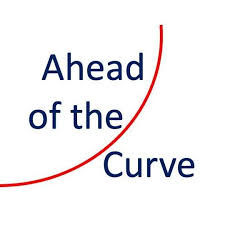Composable Enterprise: Laserfiche Was Ahead of the Curve
- Claude Schott
- Apr 11, 2023
- 2 min read

We often read analyst reports opining about what “modern” enterprise content management systems should be. While Laserfiche gets good analyst ratings, generally, analysts like big ISVs with plenty of Fortune 500 systems like Microsoft. IDC writes of a new content services model, “
“The new unified model supports a common set of content-related services, such as version control, metadata generation and management, and secure access, as well as specialized services, such as image and video processing, governance, retention, and website translation, that can be utilized via low-code/no-code tools. This will allow companies to construct solutions for “any number of content-centric business use cases.”
Laserfiche has long met those requirements, so those needing industry analyst confirmation about their choice of ECM should feel comfortable with Laserfiche. It should also be kept in mind that a good, modern ECM tames and digitizes massive and disparate collections of information; facilitates far better collaboration on content creation; uses AI to enhance significantly search, categorization, and reporting capabilities; and offers more comprehensive integration options for devices and other enterprise software systems.
I'm interested in Gartner's Composable Enterprise. This phrase discusses a “modular approach to service delivery with a plug-and-play architecture so that the various components can be configured and reconfigured.” These systems are often found in the cloud. Laserfiche offers this flexibility and extensibility, and for many content-driven businesses, a well-equipped Laserfiche solution is the biggest key to overall digital transformation.
While Gartner thinks of this concept from the product development perspective, there’s a case to be made for the component parts of your Laserfiche deployment into a composable enterprise. All the Laserfiche implementations are made from the same software components, such as LF Workflow, user licenses, QuickFields, LF Forms, and so on, which construct a Laserfiche deployment. CPS configures the component parts, which can vary depending on customer requirements.
Overall other content services (another name for ECM) vendors are getting the memo. They are increasingly becoming composable, providing an almost unlimited assortment of interchangeable modules for organizations to suit their needs.
Composable content services include these characteristics:
Architecture: With the cloud as the architecture of choice for composable content services, there is a premium for utilizing constructs for easy integration between services such as connectors, standard REST APIs, and JSON.
No-code/low-code applications: The capacity to readily interchange any number of content management services with low-code methods is critical for assembling composable applications.
Composable AI: The capability to swiftly modularize various AI offerings is integral for helping firms deliver much-needed structure to the surplus of unstructured data found in documents, forms, images, and videos.
Comments